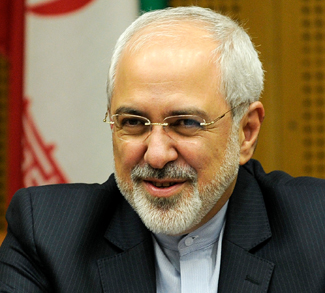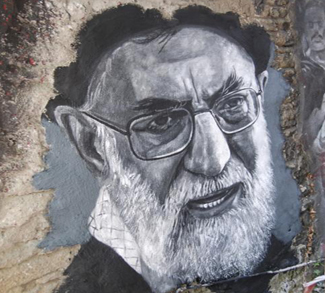In a significant escalation of hostilities, Israel’s recent strikes on Iranian military facilities signal a critical turning point in the Israeli-Iranian conflict and the wider geopolitics of the Middle East. By targeting military installations deep within Iranian territory, Israel has disrupted Iran’s long-standing defense strategy, which relies on alliances with proxy groups like Hezbollah and Hamas to project influence and keep conflicts away from its borders. With Israeli strikes now landing inside Iran, Tehran faces a dilemma in managing a conflict that has historically been fought through indirect means. The shift forces Iran to confront vulnerabilities in its defense strategy and consider new responses to Israel’s growing assertiveness.
Breaking Down Iran’s Strategy
For decades, Iran has relied on what is often termed a “forward-defense” strategy to create a buffer zone against external threats. This approach involves supporting allied groups — or “proxies” — like Hezbollah in Lebanon, Hamas in Gaza, and other affiliated militias across the region, which act as an extended line of defense against potential adversaries, especially Israel. By bolstering these groups militarily and financially, Iran has sought to spread any potential conflict across various borders, making it more costly and challenging for Israel to engage directly with Iran.
The strategy has achieved some success in limiting Israel’s ability to strike directly on Iranian soil. Hezbollah, for example, has long served as a deterrent, with its arsenal of rockets and extensive network in southern Lebanon creating a credible threat against Israeli territory. Similarly, Hamas, though much weaker militarily, poses a persistent challenge to Israeli security, impacting national morale and intensifying political pressure on the Israeli government.
However, the recent Israeli airstrikes on Iranian radar and air defense systems within Iran’s borders have called this model into question. These strikes bypassed Iran’s forward defenses and penetrated its own airspace, a rare event not seen since the Iran-Iraq War of the 1980s. The strikes challenge the previous assumption that Iran could keep conflict at a distance by relying on proxies. For Israel, this represents a significant show of strength and a clear message: if Iran escalates its support for anti-Israel militias, Israel is prepared to retaliate directly against Iranian targets.
Israel’s Calculus
Israel’s approach in this operation was notably restrained. By focusing exclusively on military sites, Israel avoided hitting critical civilian infrastructure such as nuclear facilities, oil installations, or densely populated areas. This was a calculated decision, likely influenced by advice from Washington, to prevent a large-scale Iranian retaliation or a regional conflict that could escalate beyond either nation’s control. By limiting its strikes to radar installations, air defenses, and missile facilities, Israel avoided crossing the most provocative thresholds, leaving Iran an off-ramp if it chooses to avoid further escalation.
This approach aligns with what could be described as a “Lebanon model” in Israel’s strategic posture toward Iran. Similar to its engagements in Lebanon, Israel appears to be exploring a method of executing precise, limited strikes aimed at eroding Iran’s defensive capabilities over time without triggering a full-scale conflict. By gradually increasing pressure, Israel can undermine Iran’s military readiness and defensive posture without pushing for an all-out war.
Washington’s role in this calculated approach is significant. The United States has historically been cautious about entangling itself directly in the Israel-Iran conflict, but it has made efforts to support Israel’s security and dissuade Iran from large-scale retaliation. Following these strikes, the United States deployed additional military assets, including F-16s, to the region as a deterrent against potential Iranian retaliation. The move signals to Iran that any aggressive response risks further US involvement, which Tehran would prefer to avoid, particularly as it continues to grapple with economic constraints and internal pressures.
Tehran’s Response
Israel’s strike leaves Iran at a critical juncture, and Tehran now faces four main strategic paths forward. Each option comes with its own set of trade-offs, costs, and potential risks.
Iran could double down on its proxy strategy, attempting to restore the military capabilities of Hezbollah and Hamas, both of which have been weakened by recent conflicts and regional developments. This option is relatively cost-effective compared to other strategies and aligns with Iran’s historical defense posture. Reinvigorating Hezbollah’s capabilities, for example, could re-establish a credible deterrent against Israel, as Hezbollah’s extensive arsenal of rockets and sophisticated combat experience have long been viewed as a formidable threat. Similarly, Hamas, though limited in its reach, could increase pressure on Israel’s southern border and force the Israeli government to focus domestically. However, this approach has limitations. Israel’s heightened readiness and willingness to strike directly in Iranian territory may make it challenging for Iran to safely and effectively support these proxy groups without risking further Israeli action. Furthermore, regional actors, including Saudi Arabia and other Gulf states, have shown strong opposition to Iranian influence in Lebanon and Gaza, complicating Iran’s efforts to mobilize its proxies.
Alternately, Iran could pivot toward building up its conventional military capabilities by strengthening ties with nations like Russia and China. This would likely involve acquiring advanced air defenses, modern fighter jets, and more precise ballistic missiles. With advanced systems like the Russian Su-30 and S-400 air defense system, Iran could bolster its ability to repel future Israeli airstrikes. Additionally, investing in its own ballistic missile program would allow Iran to develop a stronger deterrent capability, threatening Israeli and US military assets in the region. While this approach would strengthen Iran’s defenses, it comes with significant costs. Iran’s access to top-tier military technology is limited due to international sanctions and economic constraints, meaning it may only secure second-tier systems. Even with improvements, these would likely remain inferior to the high-tech equipment Israel has access to, especially with US support. Moreover, the financial strain of investing in costly foreign equipment would further stress Iran’s already limited defense budget, potentially diverting funds from essential domestic needs.
Given Israel’s growing willingness to target Iranian soil, Tehran might consider accelerating its nuclear program, either moving toward a “nuclear breakout” or pursuing a “sneak-out” strategy to quietly amass nuclear capabilities. By developing a nuclear deterrent, Iran could create a more formidable barrier against potential strikes, as nuclear capabilities would dramatically alter the stakes of any conflict with Israel. However, this path carries profound risks. The acceleration of Iran’s nuclear program could provoke preemptive military strikes from both Israel and the United States, risking a costly and prolonged conflict. Additionally, advancing its nuclear program could isolate Iran even further on the international stage, heightening economic sanctions and deepening its economic struggles. While nuclear capabilities would provide strategic leverage, the potential backlash makes this option one of the riskiest and most controversial paths for Iran.
Iran’s fourth, and perhaps most unconventional, option would be to rethink its fundamental stance toward Israel. Reducing hostilities or even signaling a shift away from direct confrontation could allow Iran to de-escalate regional tensions and reallocate resources domestically. Such a shift could also open the door to improved relations with certain regional players and ease international sanctions, providing Iran with a more stable environment for economic recovery. Yet, given the centrality of anti-Israel sentiment in Iran’s political ideology, such a dramatic shift seems unlikely under the current regime. For decades, the Islamic Republic has defined itself in opposition to Israel, making this option challenging to pursue. Nevertheless, if economic and military constraints worsen, a pragmatic shift in policy might eventually emerge as a viable long-term strategy for reducing military pressure and re-engaging in regional diplomacy.
A New Normal in the Israel-Iran Rivalry
Even if Iran chooses to de-escalate, Israel’s recent actions have fundamentally raised the stakes in the Israel-Iran rivalry. Both sides have now crossed red lines: Israel has directly struck Iranian targets, and Iran launched ballistic missiles at Israel in early October. This direct engagement suggests a higher baseline of tensions moving forward, with each side more willing to test the other’s limits.
Meanwhile, unresolved conflicts in Gaza and Lebanon continue to add fuel to the fire, as proxy battles could quickly escalate into broader confrontations. Regional states like Saudi Arabia and other Gulf Cooperation Council (GCC) members have responded to Israel’s actions with condemnation, signaling a desire to avoid being drawn into this intensifying rivalry. Their statements reflect the wider regional fear that an Israel-Iran escalation could destabilize the entire Middle East.
Conclusion
Israel’s strikes highlight the complexities of hybrid warfare, where influence is wielded not only through direct military action but also through information control and psychological posturing. By demonstrating its ability to strike Iranian soil, Israel has sent a potent message about its readiness and reach, while Iran’s muted response reflects an awareness of its own limitations.
As Iran weighs its options, it must find a balance between immediate security needs and longer-term sustainability. The stakes are high, and both Israel and Iran face the constant risk of miscalculation in an increasingly volatile environment. In this tense new landscape, the potential for small provocations to escalate into larger confrontations is ever-present, making the path forward as precarious as it is unpredictable.




